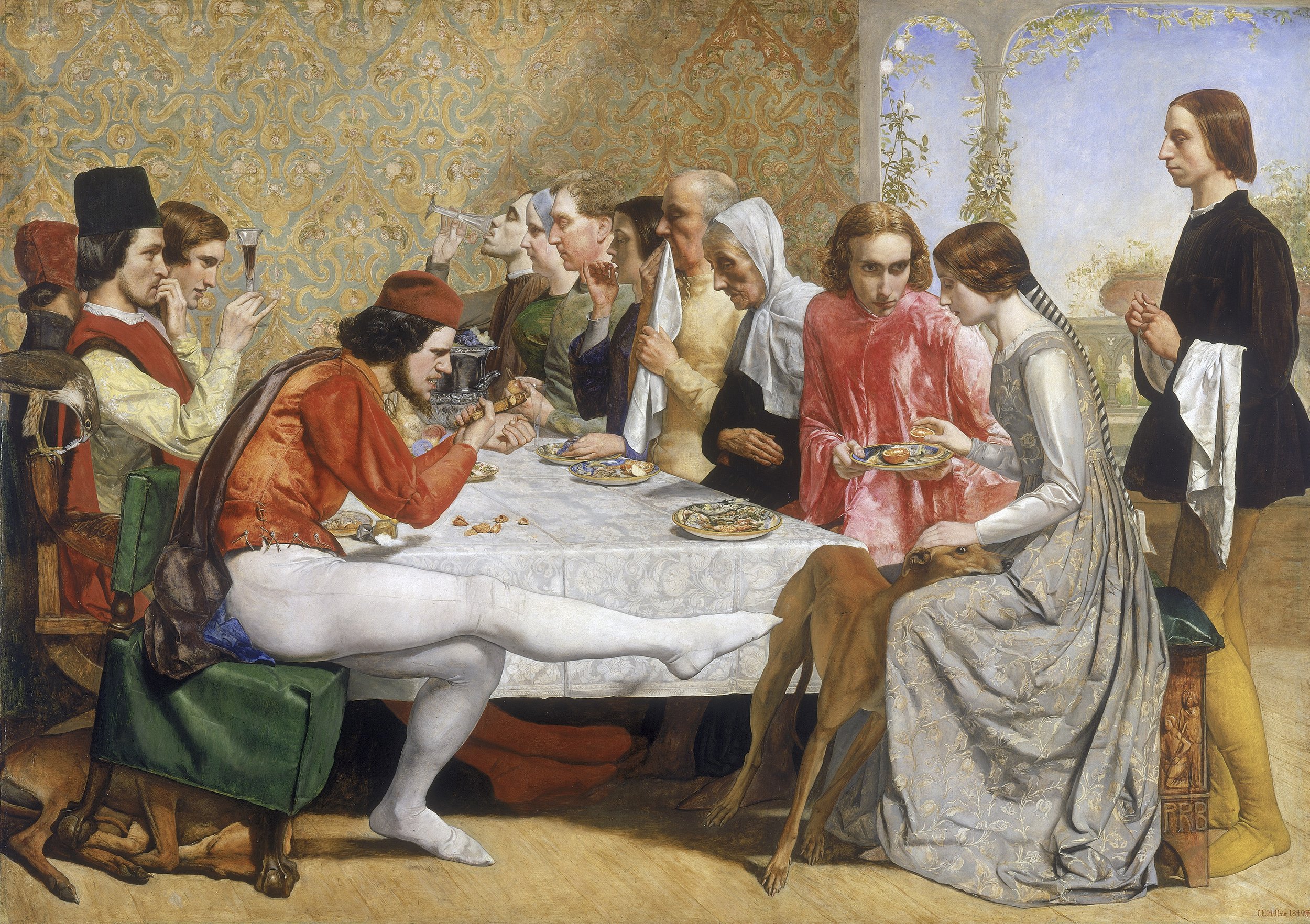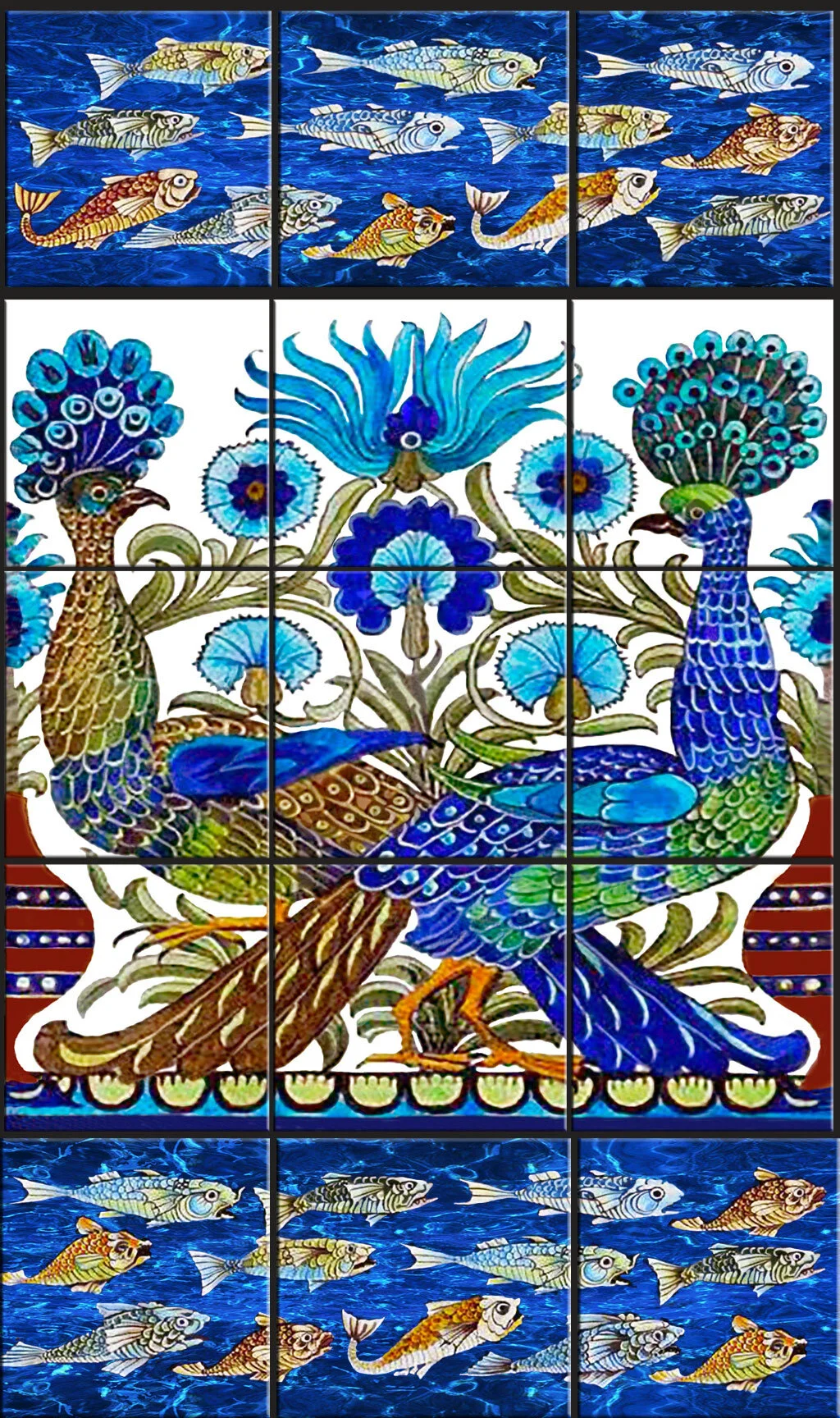Lorenzo and Isabella by John Everett Millais, 1849.
This work illustrates John Keats poem Isabella, whose work the Pre Raphaelite Brotherhood much admired.
Your Custom Text Here

Lorenzo and Isabella by John Everett Millais, 1849.
This work illustrates John Keats poem Isabella, whose work the Pre Raphaelite Brotherhood much admired.

Spring (Apple Blossoms) by John Everett Millais.
Millais is one of the founding members of the 19th century British artist group known as the Pre-Raphaelite Brotherhood. He achieved the most fame of the group and eventually came to lead the Royal Academy he had rebelled against.

Whatever it is, the way you tell your story online can make all the difference.
April Love, 1855-56 by Arthur Hughes.
Hughes accompanied this painting with a poem by Tennyson called The Miller's Daughter. I love the vibrant purple of the dress, it just pops out of the painting.

Peace Concluded, 1856 by John Everett Millais.
This scene marks the end of the Crimean War and the return home of the soldier to his family.
On the mother's lap, four animals from the toy Noah's Ark represent the four belligerents: Britain (lion), Russia (bear), the Ottoman Empire (turkey), and France (rooster).
The father holds the newspaper that announces the end of the war.
This post is in honor of all the fathers (and mothers) who sadly cannot celebrate with their families because they are still fighting a war.

The Two Gentleman of Verona Valentine Rescuing Sylvia from Proteus by William Holman Hunt.
One of the original Pre-Raphaelites, Hunt takes his subject from a Shakespeare play. The PRB liked to get their subjects from literature and to paint out of doors in natural light. I'm sure the model for Sylvia Elizabeth Siddal, had sore knees.

La Belle Iseult, 1858 by William Morris, The Tate Modern, London.
The model for this work is Jane Burden who later became the wife of William Morris and lived with him at Red House. Note his emphasis on the design and detail in the room, he later gave up painting in favor of interior design and was very successful with Morris & Co.

Peacock Tile Panel by William De Morgan, Formally The Peacock House now run by the Richmond Fellowship, London.
William De Morgan became involved with the Pre-Raphaelite movement through William Morris. Morris, Burne-Jones and others were interested in medieval decoration for their homes and De Morgan's tiles were the perfect addition.

Leisure Hours by John Everett Millais, The Detroit Institute of Arts.
Late in his career, Millais gave up the idealisim of his youth and the PRB and created very popular and sentimental pieces. He was also quite sought after as a portrait artist for his ability to create beautiful paintings around his subjects.


The Star of Bethlehem, 1888-91 by Edward Burne-Jones, Birmingham Museums and Art Gallery, UK.
This watercolor was originally a design for a tapestry and is very large roughly 8ft x 12ft and he used a ladder to do the painting.

Mariana by John Everett Millais, Private Collection.
Mariana is the main character in a poem by Tennyson that deals with a woman "trapped" in her life. She is surrounded in a perfect Victorian setting by the dictates of the Arts & Crafts movement. The movement was a reaction to the increased industrialization of the world and sought to emulate a time when everything was created by hand.

Ophelia, c. 1851-53 by Arthur Hughes, Manchester City Art Galleries.
Hughes was influenced by Pre-Raphaelite Group after reading their publication The Germ. His painting of Ophelia from Shakespeare's Hamlet represents a much younger woman then most other artists, even as Hughes himself would later portray her.

Ophelia by John Everett Millais, 1851-2, The Tate Gallery, London
Millais’ painting of Ophelia done very early in his career is one of the finest works created by the short-lived Pre-Raphaelite Brotherhood and their movement. The legend of the candles, sickness and the model herself would become the PRB’s most often re-told tale. However, it pales in comparison to the work itself when it stopped me in my tracks at the National Gallery in London (on loan from the Tate at the time) and set me on a whole new path for my Master’s thesis.

The Poisoned Cup (aka "Carrying a Peacock") by John Dawson-Watson, 1869
Another artist discovered via Pinterest.
John Dawson-Watson was a British Impressionist whose early work seems very similar to John Everett Millais of the Pre-Raphaelite Brotherhood fame. The rich colors and attention to detail found in this work becomes looser and more pastel after he studies Impressionism at Monet's home in Giverny.